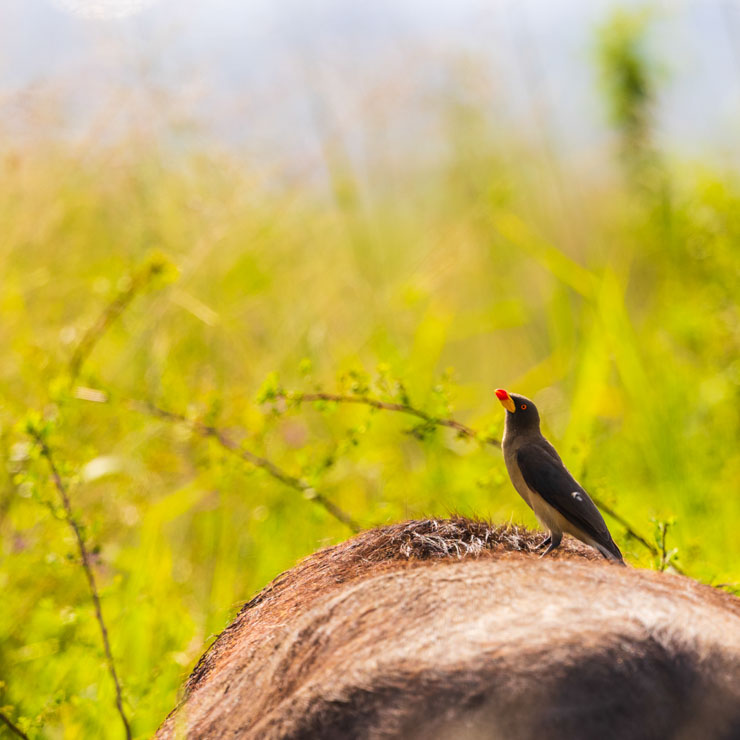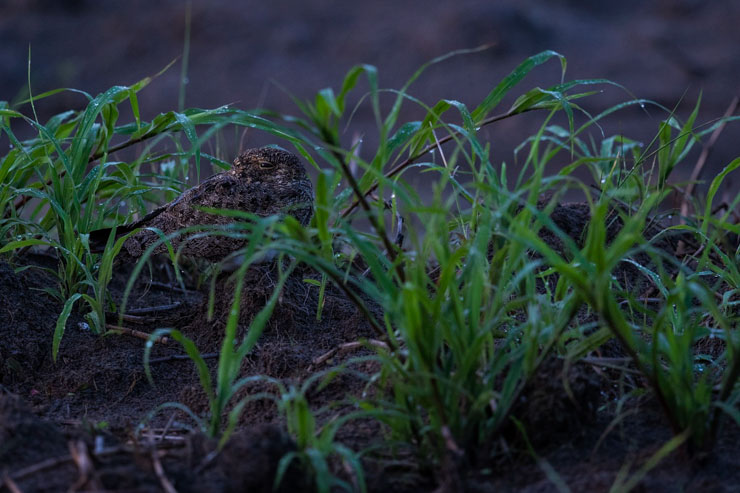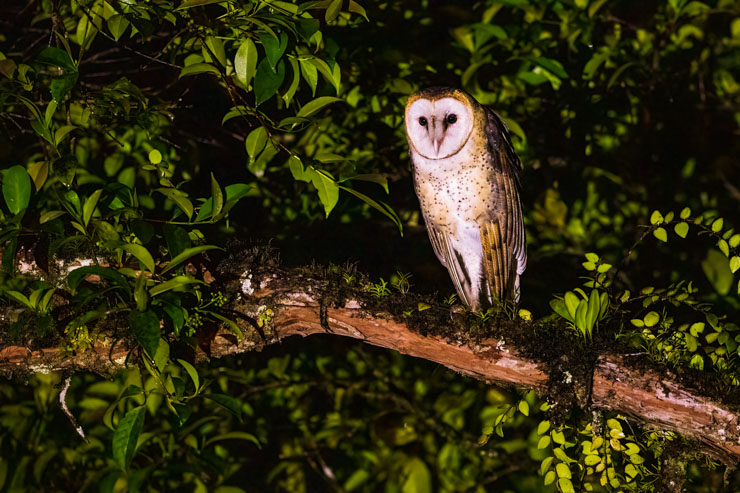Tis the season for ghoulishness, that chill you’re feeling in the air may be the wispy fingers of whatever is lurking in the shadows. Or maybe it’s a cold front. Whatever it is, it’s waiting in the wings to pounce. For me, birds aren’t the scariest of things – but then again I’m not preyed upon by anything wearing feathers. Not yet in my evolutionary journey, at least. I understand and acknowledge that some people have a legitimate fear of birds, and to those folks, I deeply apologise for accentuating some phobia-inducing characteristics. It may be a poor choice for a sufferer of ornithophobia to be perusing a birding blog anyway.
Let’s start with the bringer of all bad news, the judgemental stare from atop gravestones – the crow. Made into all manners of myth and legend, crows have cohabited spaces with humans for eons. Their undeniable intelligence and penchant for mischief conjures perhaps the scariest consideration of all: a reflection of our own existence.

In some cultures, crows are considered messengers of the gods, a fact that surely missed whomever gave the Carrion Crow its name.
Ravens are sometimes mistaken for crows – the former typically being of much more impressive dimensions than the latter. Their vocalisations can be deeper, more guttural as well. Due to their imposing figure, they are arguably the spookier of the two. Personally I’ve only seen a few species of ravens, the latest was a pair of hulking roadside White-necked Ravens while blitzing southward to the airport in Nairobi. My first raven was coincidentally also an African species: a Fan-tailed Raven from our first birding safari in Kenya.

Fan-tailed Raven
Although photos will never do this justice, the Long-tailed Widowbird is an absolute ghoul of a bird. For anyone who’s seen this bird in its display flight it’ll make perfect sense. Extra-long, wispy tail feathers trail a buoyant flight path, its broad wings held stiff much like a nightjar. Overall, the bird looks like the rogue missing piece from the headless horseman on another reckless jaunt on a misty morning, locks flowing in the cold air as if they were waving in water.

Long-tailed Widowbird
Despite the widowbird’s fiendish looks, it sometimes falls victim to a bone-chilling parasite. Many birds, in fact, also suffer this fate – some of them have gone to great lengths to avoid it. I’m speaking of brood parasitism, whereby the brood parasite – one of many species of birds worldwide – lays its eggs in the nests of the host species. The host then either unwittingly or unwillingly incubates the alien egg and cares for the disproportionately endowed hatchling until it is able to fend for itself.

The Striped Cuckoo actually lays different coloured eggs, depending on which host species it is dependent upon. Upon hatching, the Striped Cuckoo uses its sharply hooked bill to kill its nest mates, ensuring that it is the only recipient of (foster) parental care. The bird pictured above is a young one, perhaps preparing to strike out on its own.

Here, a House Wren struggles to meet the incessant demands of an offspring that has long outgrown the confines of the nest – a Shiny Cowbird.
Some weeks prior to all of this, a small group of female Shiny Cowbirds would have been meticulously checking all potential hiding places for suitable nests. Many times they’d be observing a potential host throughout the nest construction phase. They must coordinate their cycle with that of their hosts’, many of the resident birds would either try their best to remain hidden or mount an offensive against the prowling cowbirds. Their reputation must precede them, given the reaction they elicit from wrens, mockingbirds, and tanagers. But the cowbirds are seasoned in this art, eggs can easily be replaced when the incubator is distracted.

With their supersized structure and searing, blood-red eyes, Giant Cowbirds look the part. Also brood parasites, their relationships with host species are complicated and perhaps a topic for another post entirely.
Are bloodsucking birds a thing? Of course they are. The Buphagidae family confined to Africa comprises two species that subsist largely on the consumption of blood. They also feed on ectoparasites such as ticks, but if there is an open wound, they will congregate around it – they are even known to remove scabs to stimulate bleeding. Commonly known as oxpeckers, their preferred habitat moves around on four legs.

Red-billed Oxpecker

Yellow-billed Oxpecker
It is impossible to write about spooky birds and not mention vultures. Notwithstanding their irreplaceable ecological services, these carrion-eaters are symbols of the macabre. Some scorn them for their association with death, for others it is this very association that paints vultures as those who can turn death into life.

For the Mayans, the King Vulture was the vehicle by which messages could be carried between humans and the Great Spirit.

It helps when the atmosphere is grim – this image of a Turkey Vulture won hearts at an exhibition I did last year. Suitably titled “The Gatekeeper”.
In terms of looks, nocturnal birds tend to unsettle the most. They are typically designed to remain invisible during the day and therefore are some of the weirdest, non-avian looking birds on the planet. Take for example, the Common Potoo that resembles a branch. One with the branch – a philosophy some of us may eventually adopt, except our version involves a couch.

Common Potoo

Or this Nacunda Nighthawk that looks like a cyclops disguised as a clump of mud.
Special mention must be made of the Oilbird, for reasons that eclipse this post entirely. It is a creature of superlatives, but it earns its place on this list for its hellish screeching that has earned it the name “Diablotin” in Trinidad. These vocalisations have been likened to those of tortured men. Sample it here.

Oilbird
Invariably, this post must mention owls. They are quintessential creatures of mystery, silent messengers that stare deep into the souls of whomever dares to cast an eye in their direction. Their undeniable appeal stretches long before J.K. Rowling put pen to paper and surely is due to their incredible adaptation to a world of darkness, one within which we are notably uncomfortable in our own skin.
Their feathers conceal them in realms of sight and sound, their forward-facing eyes and concealed ears perceive even the most dismal of surroundings with unsettling clarity. Despite their cuteness factor often winning the internet, they are lethal – and often apex – predators. Even our glorified diurnal raptors, fierce themselves, are not immune. One look at this video is enough.
Interestingly, the most recognisable owl is the Barn Owl, which does not belong to the family of “true owls”. Sounds a bit like the oft-repeated argument over underground sub-genres. Taxonomically speaking, there are very notable differences between owls found in Tytonidae as opposed to those of the “true owls” in Strigidae.

Barn Owl
There is far greater diversity within Strigidae owls, including both the largest and smallest owls in the world. This family also has a much wider distribution, being found at all latitudes on all continents except for Antarctica.

I fondly refer to the Ferruginous Pygmy-Owl as a tiny terror. Yes, it is adorable. But have a look at those oversized talons! No wonder every bird within a 500m radius says every imaginable prayer to chase this owl away. What’s even more terrifying is that this owl can hunt during the day as well as the night.

The powder-pink eyelids of the Verreaux’s Eagle-Owl do not detract from its arresting presence. It is Africa’s largest owl and will prey on virtually anything that it can overpower. While it typically hunts at night, if you’re a small monkey that’s rummaging around under a tree with one of these birds sleeping above – make not even the softest sound as it will likely drop from the branches, talons first.

Sometimes birds that inherently aren’t spooky can look a little spooky given the right conditions. Take this Guianan Cock-of-the-rock for instance. Well, for starters it doesn’t really look like a bird – more like an oversized and very out of place goldfish.

The Secretarybird does not look like it should be anything to be afraid of, with its gaudy plumes and yoga pants. But it willingly runs towards many of the animals we run from – most notably snakes – and obliterates them in a volley of kicks. As formidable as it is, it sometimes falls victim to the Verreaux’s Eagle-Owl.
Included in this post are birds that I have been fortunate to see and photograph, therefore some candidates for spooky birds have been left out. Vampire Ground-Finch and Satanic Nightjar, for example. Special mention must also be made of the mighty Shoebill, which I intend to get my eyes on in a few months (we just need one more person to sign up).

In lieu of the Shoebill, here’s the Neotropical approximation, the Boat-billed Heron. Its smaller size makes it a little less imposing but no less desirable.
Of course, I can witter on incessantly about birds and how awe-inspiring they all are. This was originally intended to be a list of ten birds, but with ten more minutes spent writing this post we’ll have at least a dozen more species in the mix.
Source link


